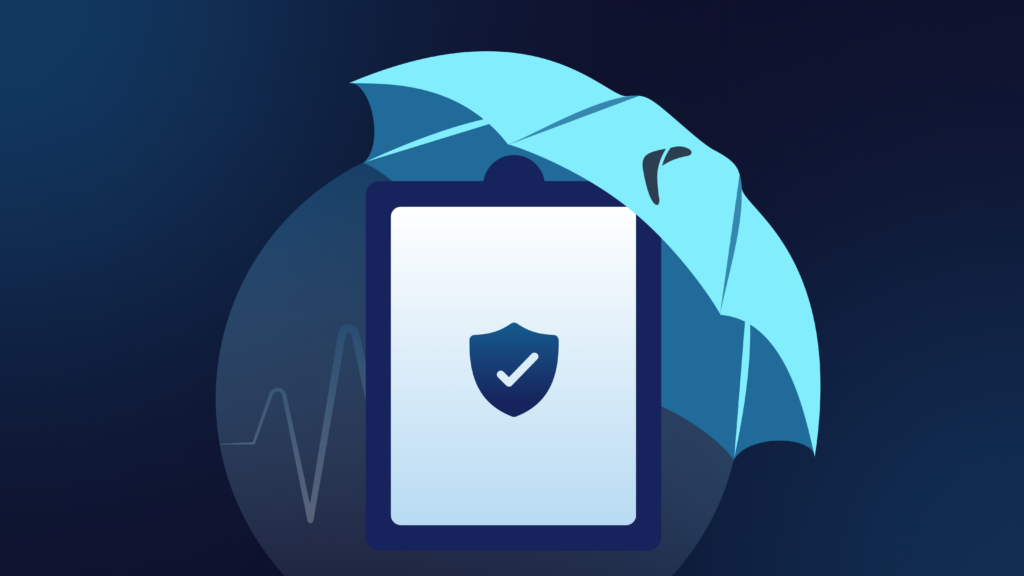The Health Insurance Portability and Accountability Act (HIPAA) sets strict security, privacy, and accessibility regulations for any organization that handles protected health information (PHI). HIPAA compliance requirements are designed to protect patient health data from unauthorized access, data breaches, and loss.
Table of Contents
For businesses handling electronic protected health information (ePHI)—whether directly or through SaaS applications—HIPAA compliance is a requirement.
The HIPAA Security Rule requires a Contingency Plan that establishes policies and procedures for data events. A key part of this plan is a Data Backup Plan, which ensures that sensitive data is backed up and can be restored quickly. Having a sound backup strategy, in accordance with the 3-2-1 principle for backups, is not only smart business but also aligns with HIPAA requirements.
HIPAA and cloud data
If your organization uses cloud-based tools to store or manage healthcare-related data, maintaining secure backups, access controls, data encryption, and audit logs are all required for HIPAA compliance.
For businesses storing sensitive data on SaaS platforms like Jira, GitHub, and Azure DevOps, HIPAA compliance isn’t just a legal requirement. It’s also an important trust signal to customers. Ensuring secure, compliant data protection helps mitigate risks and prevent costly HIPAA violations.
Rewind supports HIPAA compliance
Rewind actively supports your organization’s HIPAA compliance efforts by ensuring critical data is backed up, that these backups can be quickly restored in the event of a data loss, and that organizations can demonstrate HIPAA compliance in the event of an audit.
HIPAA compliance isn’t specific to healthcare providers. Compliance requirements extend to any business or organization that handles electronic health data. Rewind supports organizations towards meeting their HIPAA compliance goals by offering:
✅ Secure, encrypted backups of electronic protected health information (ePHI)
✅ Granular audit logs to track changes and access
✅ Access controls
✅ Data encryption in transit and at rest
✅ Fast, reliable restores to ensure ePHI availability in case of a data incident

HIPAA Glossary: Security, compliance, and data protection
| HIPAA term | Definition |
| Business Associate (BA) | A third-party service provider that handles PHI on behalf of a covered entity. Companies like Rewind, if storing or backing up PHI, must sign a Business Associate Agreement (BAA). |
| Business Associate Agreement (BAA) | A HIPAA-mandated contract between a covered entity and a business associate or between two business associates.It outlines each party’s responsibilities for protecting PHI and ensuring compliance with HIPAA’s Privacy, Security and Breach Notification Rules. |
| Covered Entity (CE) | Any organization that must comply with HIPAA, including healthcare providers, insurers, and clearinghouses that process PHI. |
| Data Backup Plan | Documented and implemented procedures to create and maintain exact copies of electronic protected health information that can be restored in the event of data loss. |
| Disclosure Accounting | The HIPAA Privacy Rule includes Accounting of Disclosures. The Accounting of Disclosures applies to Covered Entities. Covered Entities must provide individuals with a record of certain PHI disclosures, including those made by Business Associates. |
| Electronic Protected Health Information (ePHI) | Any protected health information (PHI) stored, transmitted, or processed electronically. Subject to HIPAA Security Rule requirements. |
| Health Insurance Portability and Accountability Act (HIPAA) | A U.S. law that establishes privacy, security, and compliance requirements for handling health information, especially PHI and ePHI. |
| HIPAA Privacy Rule | Regulations that protect PHI by setting guidelines on how it can be used, disclosed, and shared. It also grants patients rights over their health information. These standards require appropriate safeguards for PHI and sets limits on uses and disclosures of PHI. It also provides individuals with certain rights in relation to their PHI. |
| HIPAA Security Rule | Establishes the required administrative, technical, and physical safeguards to ensure the confidentiality, integrity and security of ePHI from unauthorized access, alteration, or loss. |
| Audit Log / Audit Trail | A HIPAA-required security measure that records who accessed PHI, when, and what changes were made. Helps detect unauthorized access or breaches. |
| Access Control | A HIPAA Security Rule standard that requires organizations to restrict access to ePHI based on user roles and implement authentication measures. |
| Contingency Plan | The HIPAA Security Rule requires that organizations implement procedures for responding to emergencies or other occurrences that damage information systems containing ePHI. This includes establishing plans for ePHI backups, restoring lost data and continuing critical business processes for protecting the security of ePHI. |
| Data Backup & Disaster Recovery | HIPAA mandates that ePHI must be backed up and restorable in case of system failures, cyberattacks, or disasters. Companies like Rewind provide secure backup and restoration solutions to support HIPAA compliance. |
| Encryption | A HIPAA best practice (and in many cases a requirement) that ensures ePHI is unreadable if intercepted or stolen. It applies to data at rest and in transit. |
| Incident Response Plan (IRP) | A formal HIPAA-required policy that outlines how an organization will respond to security incidents or data breaches affecting ePHI. |
| Minimum Necessary Standard | A HIPAA Privacy Rule principle that limits PHI use or disclosure to only the minimum amount necessary to accomplish the intended purpose of the use, disclosure, or request. . |
| Penetration Testing (Pen Testing) | An advanced cybersecurity measure (not explicitly required by HIPAA but recommended) to simulate cyberattacks and test system security. |
| Protected Health Information (PHI) | Any individually identifiable health information related to a patient’s health status, medical treatment or payment for healthcare services. |
| Risk Analysis & Risk Management | A HIPAA Security Rule requirement for organizations to identify vulnerabilities, assess risks to ePHI, and take steps to mitigate them. |
| Security Incident | Any attempted or actual unauthorized access, use, disclosure, or destruction of PHI, or any other event that compromises the security of PHI or system operations. |
| Security Rule Administrative Safeguards | The assessments, responsibilities, policies and procedures, training, access management and contracts that ensure appropriate protections of ePHI. |
| Security Rule Technical Safeguards | The technical controls required to protect ePHI—including encryption, access controls, audit logs, and automatic logouts. |
| Security Rule Physical Safeguards | Measures to protect physical access to ePHI, such as server room security, workstation controls, and secure data centers. |
| SOC 2 Compliance | A security framework often used by business associates to demonstrate strong controls for data protection. While not a HIPAA requirement, SOC 2 compliance supports HIPAA security standards. Rewind is SOC 2 compliant. |
| Third-Party Risk Management (TPRM) | A compliance strategy ensuring that vendors and partners handling ePHI meet HIPAA security standards (including backup providers like Rewind). |
| Vulnerability Scanning | A proactive security practice that identifies weaknesses in systems that could expose ePHI to cyber threats. |
To learn more about the importance of backing up data in accordance with HIPAA, how to ensure your organization is HIPAA compliant, and how Rewind supports HIPAA compliance, stay tuned to the Rewind blog.



